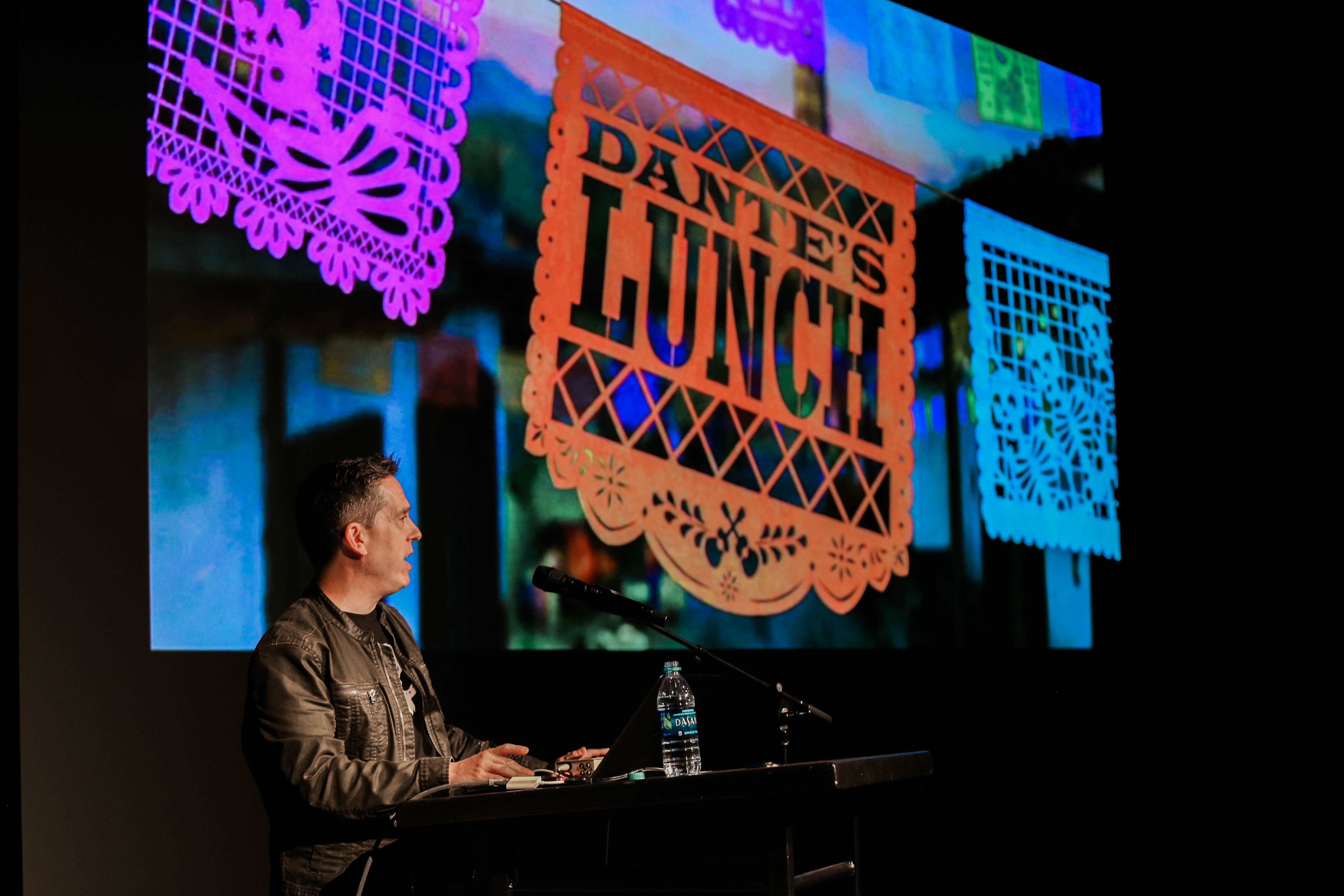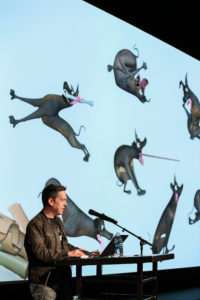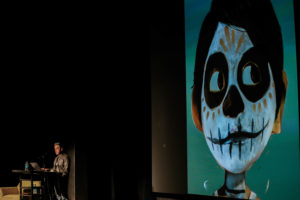
Pixar director Lee Unkrich conducted a master class with BYU students at the Pardoe Theater on Sept. 14.
Unkrich — who was in town for an evening screening of “Coco” — was introduced on stage as the film editor for Pixar’s “A Bug’s Life,” co-director of “Finding Nemo,” and two-time Oscar-winning director for “Toy Story 3” and “Coco.”
The filmmaker opened his class with the disclaimer that he couldn’t convey his entire career. Instead, he focused on memorable moments and important lessons learned during developing “Coco.”
“It’s pretty much impossible to reduce six years of work by hundreds of people into a short talk,” he said. “But I’ve tried to at least give you a glimpse. Some of what I have put together for you to see has rarely been seen publicly.”
As Unkrich displayed a colorful painting from “Coco” onto the screen, he described a moment in his life, six years ago, when he thought of the idea that sparked the film.

He told the audience as he was visiting the Mexico pavilion at Disney World’s Epcot Center in Florida with his family, he spotted a set of four papier-mâché skeletons playing in a Mariachi band.
When he saw the paper figures he immediately thought two things: “This would be really fun to see it animated” and “This was a world I had never seen explored on film before.”
Unkrich provided step-by-step information on the process of how different aspects of the film developed, starting from an abstract idea to the final on-screen version.
He first described the process of bringing Dante — a dog shown in the film — to life.
“We wanted Dante to be kind of a hot mess, like a puppy in an adult-sized body,” Unkrich said.
He said one of the challenges in getting Dante to look real was simulating the muscle movements on Dante’s skin. The problem was shortly solved when the animators decided to use the same jiggle simulator used on the arms and neck of Abuelita, the grandma, on Dante’s skin.
Unkrich also described the process behind creating the land of the dead. Topics included animating skeletal characters without losing authenticity, designing mystical creatures like the Alebrijes and composing authentic music.
The director said he found inspiration through his life experiences, meaningful conversations and observing people — a concept not lost on his audience.
“I learned we can really get ideas from everywhere and any source or culture,” said animation major Jenika Wimmer.

Unkrich also said “Coco” has become one of his most meaningful projects over the last six years. The film gave him a greater sense of appreciation and love for his own family, which can be seen in small details, according to the director.
Guitar designs for the main character, Miguel, were taken from a drawing made by Unkrich’s son. Additionally, Miguel’s writing is his son’s handwriting.
Junior animation student Joseph Bailey said Unkrich’s inspirations have inspired him to “be bold about my own ideas.”
The director encouraged students to pursue their interests and specialize their skills.
“The important thing is to find out what you like, what you are passionate about and become really, really good at it so that when the opportunity comes, you are valuable,” he said.




